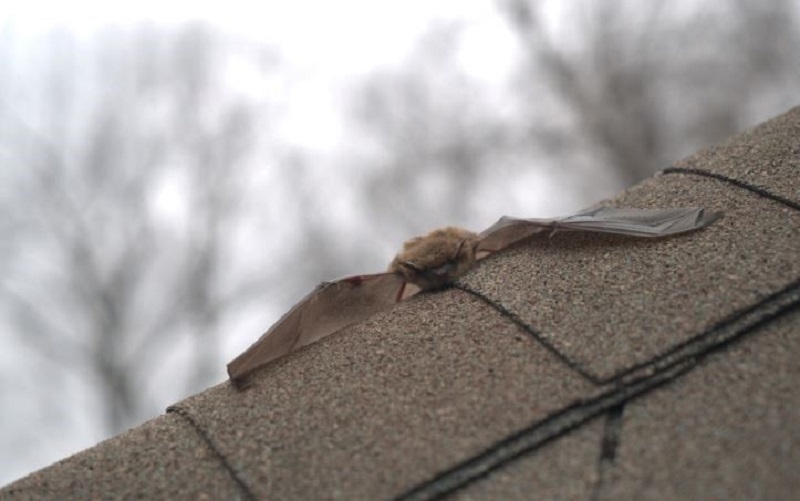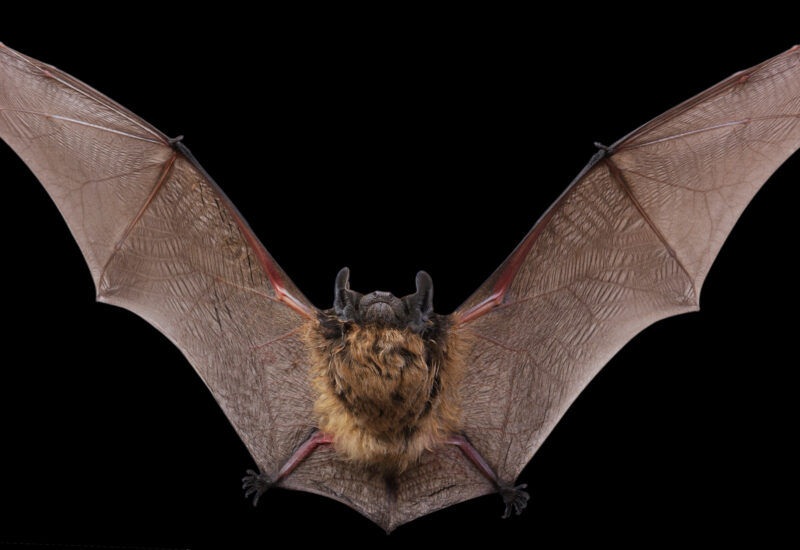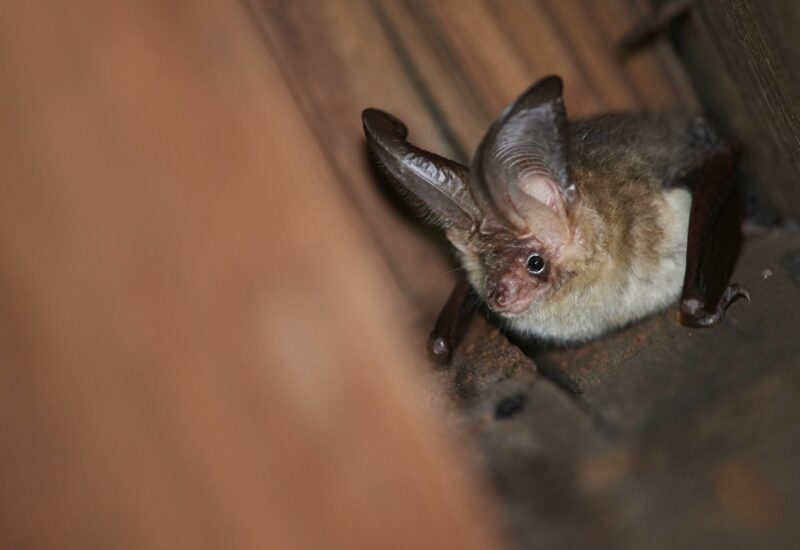How to Prevent Bats in Your House

Learn How Bats Can Enter Your Attic and Roofline
Finding a bat in the attic or roofline of your house or business is more common than most people realize.
Bats in the attic of a building can cause many headaches for homeowners and business owners, including staining the building’s siding, ruining insulation, and causing moisture damage.
One of the greatest dangers of bats, however, is the potential for disease.
Diseases Spread by Bats
Bat guano (feces) can accumulate quickly and is a breeding ground for an airborne disease called Histoplasmosis. This disease is transferable to humans who breathe in the fungal spores.
Those who have inhaled the spores could potentially suffer from a fever, cough, and fatigue. Depending on the severity, medical attention could be required, especially for those with weakened immune systems.
Bats are also known to carry rabies. This viral disease can cause progressive paralysis and, in some cases, death in mammals, including humans.
Fun Fact: Bat guano is one of the few droppings that “crushes” easily when pressed. This is a common way that wildlife professionals verify that it is, indeed, bat guano.
Bat Infestation Signs in Your Attic
There are a few telltale signs that would indicate if you will need to remove bats from your attic or roofline.
Signs of a bat infestation include:
Strange Noises
Some sounds are not easily explained, but high-pitched squeaks are typically a sure sign of bats living in your home or business.
If you have heard strange noises coming from the walls, attic, or roofline, it isn’t always caused by the house or building “settling.”
Bat Droppings
Finding bat droppings throughout your property, especially on a frequent basis, is extremely problematic.
It could also be an indication that the bat(s) have established a point of entry. If this is the case, bat removal and exclusion is essential for your property.
Unexplained Odors
With the previous point in mind, if a colony of bats have moved in and you aren’t aware of it, there could be unexplained odors.
As we’ve learned, bat guano can be a health concern, but bat urine and feces can also leave behind a smell that is quite unpleasant. This odor is sometimes similar to an ammonia smell.
Having a Bat in the Living Space
Having a bat in the living space is often a sign that bats are roosting or hybernating somewhere in the home (eaves, attic, under insulation, etc.).
A common misconception that we frequently hear is homeowners who have left a window open and think the bat accidentally flew in.
If you have a bat in the living space, contact our pest and wildlife professionals.

How to Prevent a Bat Infestation
To save yourself a headache, follow these helpful tips to keep bats out of your attic, and away from your home or business.
- Place screens over attic vents. It’s important to not seal them completely; attic vents are necessary to keep the attic from accumulating toxic furnace gases, such as carbon monoxide. Attic vents also help prevent moisture build-up and mold issues.
- Place a wildlife-proof chimney cap over the chimney, especially if the chimney is not being used. Chimneys are an easy target for bats and can be used as a safe place to raise their young.
- Keep all your doors and windows shut, especially when it’s dark out.
- Make sure screens fit tightly to doors and windows, because bats can enter through the smallest of holes. Also, seal any holes around the outside of your house with hardware cloth, aerosol foam insulation, or weatherproofing strips.
- Swap outdoor light bulbs with yellow lights that attract less bugs, as they are a primary source of food for bats.
- Seal up any gaps in windows, siding, soffits, fascia, and flashing. Bats can enter and exit through cracks as small as half an inch.
- Control mosquitoes. As a primary food source for bats, having less mosquitoes on your property will encourage bats to go elsewhere for their next meal.
- Combining our Bat Exclusion Program with our signature Cat-Guard Exclusion Systems, our bat removal specialists can ensure that your home, business, or other structure is permanently protected from invasive wildlife.
Being nocturnal, bats go out in the evening, just before dark.
If you suspect you have a bat infestation in your attic or roofline, stake out your home or office during the evening hours.
As it begins to get dark out, walk around your home or business to see if bats are leaving the building. This will also help identify the bats’ point of entry.
If you find you have a bat problem and want to take care of the issue once and for all, contact Catseye Pest Control.






